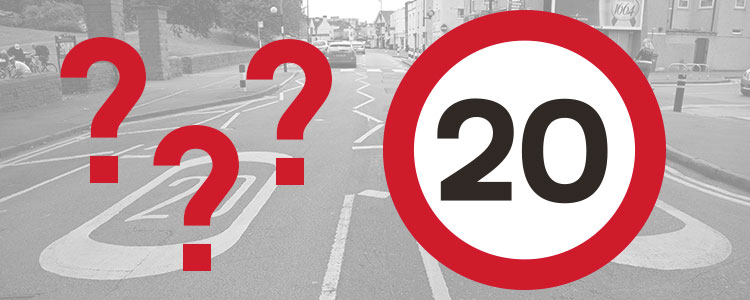FIND OUT MORE
Use this section to find out more about the scheme to introduce the 20mph speed limit to Bristol
Here you can find links to interesting documents and case studies both in Bristol and from other cities where 20 mph speed limits have been introduced.
20mph in Bristol
The introduction of the 20 mph speed limit is a policy based decision that is part of a wider transport package. These measures such as bus improvements, cycle infrastructure improvements, pedestrian and cycle training, school and business travel plans, local community transport grants, local safety schemes, resident parking schemes and other major transport schemes all make up the wider transport package aimed at improving road safety, increasing active travel and creating more pleasant communities.
Travelwest
For more information about transport in Bristol and major project updates visit www.travelwest.info
Phased introduction of the speed limit
The lower speed limit was introduced in eight phases. The first two phases were part of a pilot scheme that was introduced in 2010. The third was introduced on 20 January 2014, the fourth become operative on 11 July 2014, the fifth became operative on 29 September 2014, the sixth became operative on 27 March 2015, the seventh became operative on 19 June 2015 and the final phase became operative on 23 Sept 2015.
Cabinet report
The cabinet report set out the proposal where 90% of all adopted roads in Bristol will have a default speed of 20mph (these are unclassified roads and those classified as ‘C’ roads). All other adopted ‘A’ and ‘B’ roads would need to have a case made for them to retain the 30mph speed limit. The only roads that are exempt from the project are 40 and 50 mph roads and dual carriageways. It is proposed to be a sign only scheme with no physical engineering measures. The report set out design principles where roads should be included as 20mph, these are:
- those with a designated high street function with primary and secondary shopping frontages,
- B and A roads with school entrances or school within 200 metres which are routes to schools,
- roads with other local trip attractors such as parks, leisure facilities, health centres, hospitals, public transport hubs and interchanges within 200 metres.
The process for deciding on excluded roads was made through a combination of public views, assessments of the design criteria (listed above), speed data, stakeholder views such as bus operators and the police and road design, layout and suitability.
Date of implementation:
South pilot area (Bedminster, Lawrence Hill, Southville and Windmill Hill)
The speed limit order became operative in 2010.
East pilot area (Ashley, Easton, Eastville, Lawrence Hill and St George West)
The speed limit order became operative in 2010.
Central area (Cabot, Cotham, Clifton, Clifton East, Bishopston, Redland)
The speed limit order became operative on 20 January 2014.
Inner South area (Knowle, Filwood, Ashton Vale, Brislington)
The speed limit order became operative on 11 July 2014.
Inner North area (Sea Mills, Westbury, Horfield, Lockleaze, Henleaze, Stoke Bishop)
The speed limit order became operative on 29 September 2014.
East area (Fishponds, Frome Vale, Hillfields, Eastville, St George)
The speed limit order became operative on 27 March 2015.
Outer North Area (Avonmouth, Lawrence Weston, Shirehampton, Henbury, Brentry and Southmead)
The speed limit order became operative on 19 June 2015.
Outer South area (Bishopsworth, Brislington West, Hartcliffe, Hengrove, Stockwood and Whitchurch Park)
The speed limit order became operative on 23 September 2015.


